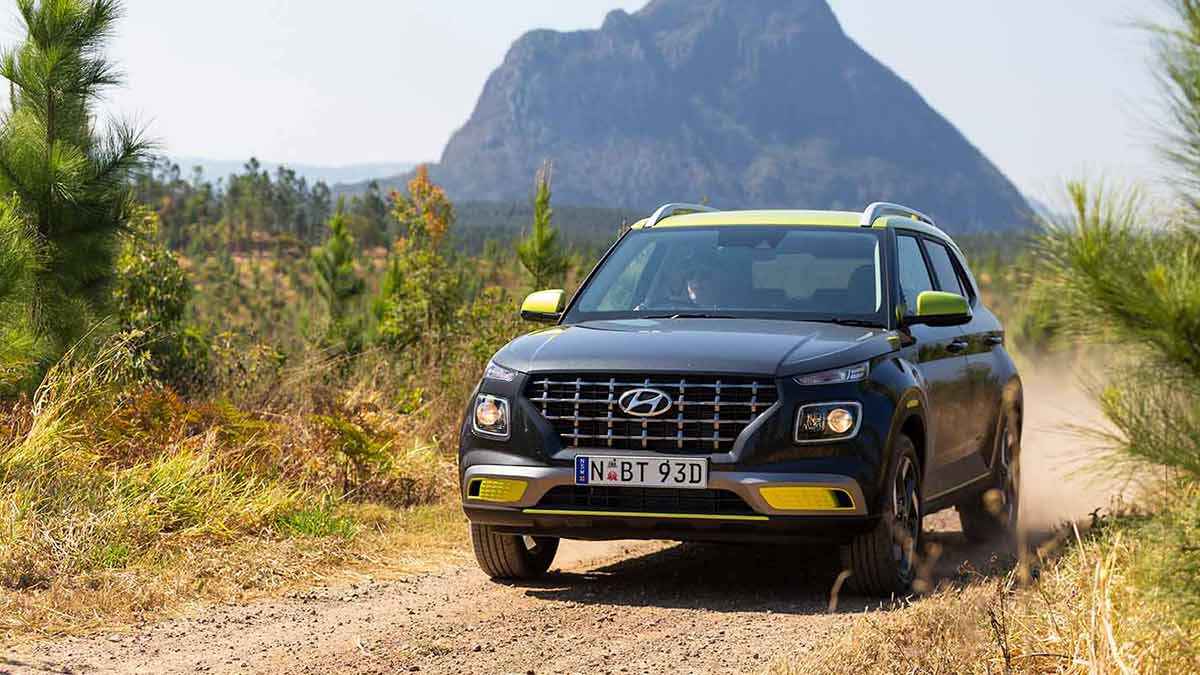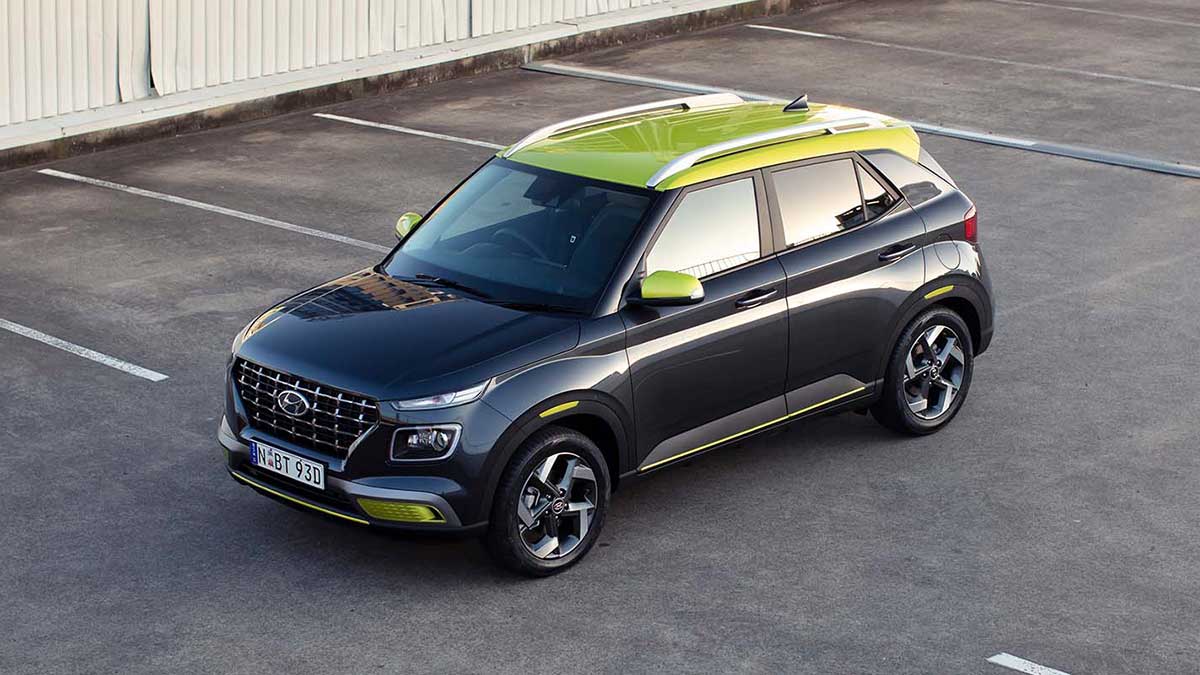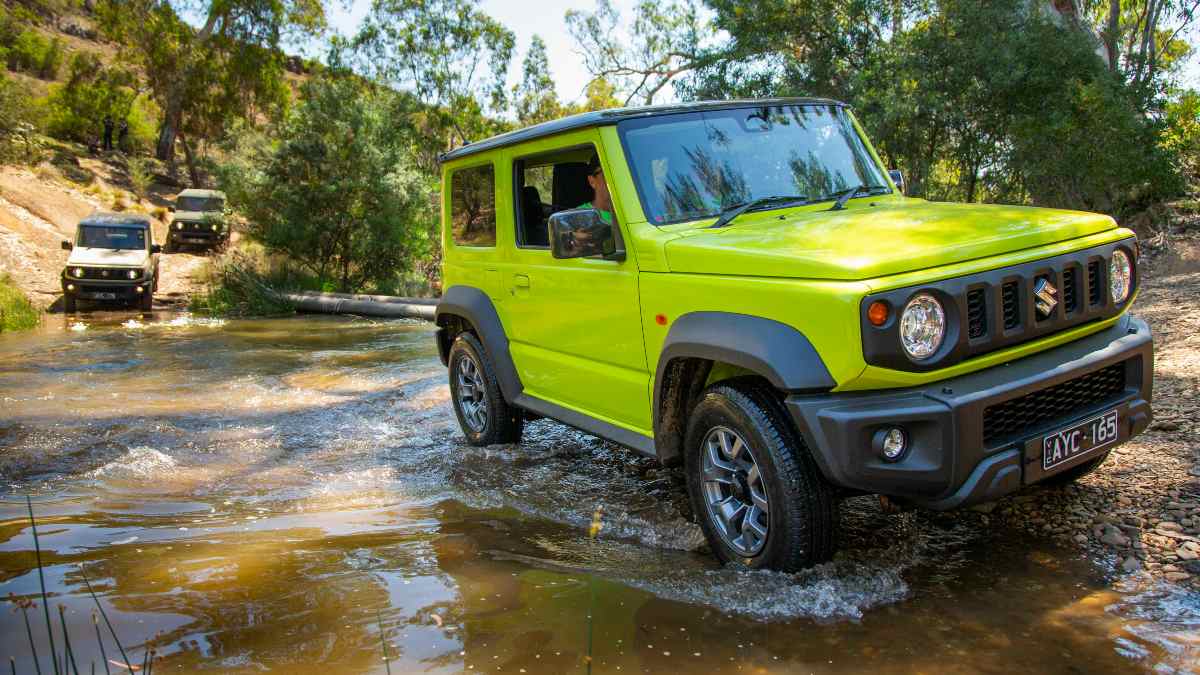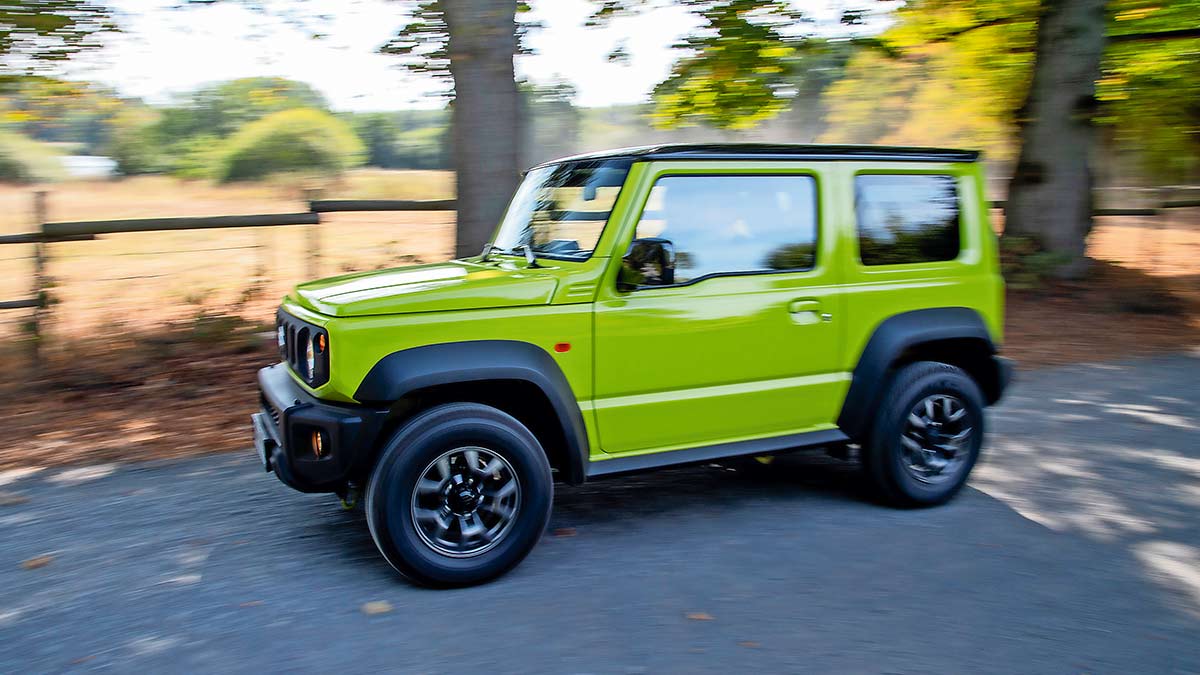Medium SUV is Australia’s biggest-selling new vehicle segment. From value and family to electric and performance, here are the best medium SUVs on sale in 2024.
Australia’s best small and compact SUVs of 2024

In the small SUV segment there are economical and practical compact options for families, luxury and performance variants for those with bigger budgets, and multiple drivetrain options including hybrid and electric. These are the best compact SUVs to buy in Australia.
If you don’t need a medium SUV for a growing children or that large SUV for towing, then the small SUV segment could be the right new car segment for you – especially if you’re looking to downsize your car and save on running costs.
Small SUVs are usually 4.5 metres in length or less – and optimised for urban environments. Today's compact SUVs come with basic technology and safety suites, are relatively frugal in their fuel consumption and mostly cheaper to service and maintain.
There are also more electric small SUVs on sale in Australia than ever before, with most eligible for EV rebates and incentives and benefits under a novated lease.
More: Search and compare different cars and SUVs
Australia’s best small and compact SUVs of 2024
- Best value small and compact SUV: Hyundai Venue
- Best family small and compact SUV: Hyundai Kona
- Best luxury small and compact SUV: BMW X1
- Best “look at me” stylish small and compact SUV: Suzuki Jimny
- Best performance small and compact SUV: Volkswagen T-Roc R
- Best electric small and compact SUV: Volvo EX30
Best value small SUV: Hyundai Venue
Also consider this compact SUV: GWM Haval Jolion
Priced from $22,500 plus on-road costs, not only is the Hyundai Venue one of the cheapest new SUVs on-sale in Australia it’s one of the cheapest and best value brand new cars full stop.
A key positive for Hyundai Venue buyers will enjoy is just how roomy this small SUV is considering its modest footprint. The Hyundai Venue is only 4040mm long and 1770mm wide, yet there is adult-friendly space in the rear and a generous 355 litres of boot storage.
The Hyundai Venue’s diminutive size makes it a great car to zip around town in, yet it also has the handling and ride courtesy of local dynamic tuning to be confident on open and regional roads as well.
The Hyundai Venue comes with a 1.6-litre petrol engine that mates with a six-speed manual or auto in the base model and mid-spec Active Venue, and only with the auto in the most expensive Venue Elite.
The Venue’s engine is rowdy and not the most fuel efficient, responsive or sophisticated in the segment
A 2023 update brought new infotainment and safety features, but on the latter topic the Hyundai Venue manages a four star rather than maximum five star ANCAP rating.
More appreciated numbers will be the five year/unlimited km warranty and 15,000km service intervals.
The GWM Haval Jolion is another compact SUV to take a closer look at, especially considering it’s just been upgraded while also receiving a price reduction.
While it’s not the most dynamic option in the small SUV segment, the GWM Jolion is substantially-sized and well-equipped, and now includes an economical petrol-electric hybrid priced from $32,990 drive-away.
Best family small SUV: Hyundai Kona
Also consider this compact SUV: Toyota Corolla Cross
The second-generation Hyundai Kona compact SUV isn’t quite the home run it could have been, but the breadth and depth of the Kona range ensures there’s a choice here to suit almost everyone.
From the orthodox 2.0-litre base model, through the hybrid and turbo-petrol sports SUV to the battery electric flagship, the Hyundai Kona offers performance and on-road behaviour ranging from the reasonable to the zesty.
The new Hyundai Kona is also a bigger small SUV than before and more generous in its interior and boot space, making it a proper family transporter.
The cabin appointments and the quality of its trims are also clearly uplifted from the previous generation of the Kona.
Prices have gone up but sadly that’s a widespread trend beyond just Hyundai, so Kona is still very competitive against its compact SUV competitors.
Unlike some other compact SUVs, the Hyundai Kona makes do a with a four star ANCAP rating rather than the maximum five stars.
Speaking of safety, the Hyundai Kona has very intrusive and poorly-calibrated safety ‘aids’ that either bing at you, flash at you, or less than subtly try and drive the car for you.
If you can cope with that annoyance or are prepared to go through the multi-step process of switching them off every time you start the Hyundai Kona, then the rest of this compact SUV package makes so much sense.
From a sea of quality small SUV rivals for the Kona, we’ve opted for the Toyota Corolla Cross as runner-up in this category.
Primarily that’s based on its excellent running costs underpinned by a frugal petrol-electric hybrid drivetrain that is standard across the Corolla Cross range.
More: The best used cars and SUVs under $30K
More: Search and compare family cars and SUV

The Hyundai Kona compact SUV is generous with its interior and boot spaces, making it perfect for families
Best luxury small SUV: BMW X1
Also consider this compact SUV: Lexus LBX
Once upon a time the BMW X1 was controversial because it was one of few cars to wear the BMW badge that sent power to its front rather than rear wheels. For compact SUV buyers, it’s no longer an issue.
Instead of being innovative and controversial, the BMW X1 is one of the more sedate and conservative members of the current BMW line-up.
What the BMW X1 does is convincingly shrink the luxuries available higher up in the brand’s SUV range into a smaller and more compact package. The X1 has a lovely interior that layers technology - including a miniaturised version of BMW's iX electric flagship’s curved screen - over quality leather trims and designs.
On top of that, the BMW X1 adds refined driving manners thanks to petrol engines that deliver the eagerness that will appeal to those looking for a fun car to drive. The flagship BMW X1 M35i is more extroverted and packs useable performance.
The BMW X1 range comes with a composed dynamic tune and a hushed experience inside the generously-sized cabin for small SUV standards.
The BMW X1 range is pricey however, starting north of $60,000 plus on-road costs. Although it’s not as expensive as its electric close relation, the BMW iX1, which starts just under $80,000 before on-roads.
The Lexus LBX is the smallest luxury SUV you can buy in Australia. It’s a Toyota Yaris Cross (Toyota owns Lexus) with a much nicer interior, better noise dampening, more equipment and zippier performance.
But it can’t change its fundamental size and packaging, which is tiny even by small SUV standards, which means rear seat passengers are in for a very cramped time.

The BMW X1 convincingly shrinks the BMW luxuries into a more compact SUV package
Best "look at me" small SUV: Suzuki Jimny
Also consider this compact SUV: Nissan Juke
This is the small SUV category where your heart rules the car-buying journey. And there’s no doubt the Suzuki Jimny is one of those fall in love at first sight vehicles for compact SUV shoppers.
Essentially the Suzuki Jimny is a rough and tough small off-roader at its best and happiest churning up the side of a rocky mountain pass, or rambling along a sandy beach.
However, the Suzuki Jimny is not so good at everyday commuting - it feels pretty insecure, slow and out of its depth on the road.
And until the long wheelbase Suzuki Jimny XL was introduced recently, it wasn’t that good at transporting people and their contents inside either.
Nor is the Jimny’s small petrol engine particularly effective when you add in the extra weight the five-door XL carries.
The Jimny’s safety score isn’t great either, with ANCAP awarding it just three stars (that rating is restricted to the 3-door).
But the Suzuki Jimny is loved and bought in big numbers in Australia - it is the essence of a “look at me” vehicle in the small SUV segment.
The Nissan Juke qualifies as a “look at me” vehicle simply because it looks so different from other offerings in the compact SUV segment.
Nissan has always insisted it set out with the Juke to make a vehicle that people would love or hate, but not ignore. With its googly eyes and hunched frog shape, there’s no doubt the Nissan Juke does just that.
More: Australia's best underrated and affordable used cars, SUVs and utes
Best performance small SUV: Volkswagen T-Roc R
Also consider this compact SUV: Audi SQ2
The Volkswagen T-Roc R stands out heads and shoulders above the rest when it comes to performance-orientated small SUVs, especially now the Hyundai Kona N is no longer available.
Essentially, the Volkswagen T-Roc R is an all-wheel drive hot hatch with a higher seating position and more ground clearance, combining percolating turbo-petrol power with a snappy dual clutch transmission, taut – but driver-adjustable – sports suspension, responsive steering and big brakes.
You aren’t isolated from road noise in the Volkswagen T-Roc R as you would be in a standard T-Roc, but that’s the price to be paid for 19-inch wheel and tyre combination, and the grip that comes with them.
The Volkswagen T-Roc R also offers some compromises in terms of executing normal family small SUV tasks because it’s a bit marginal for rear seat and boot space. For a car priced over $60,000 there’s also not much evidence of soft-touch trims.
But the infotainment tech is impressive in the T-Roc R, and the front sports seats keep you in place on winding roads.
The Audi SQ2 is another performance compact SUV to consider from the Volkswagen Group. It’s a T-Roc R by a more premium manufacturer. The Audi SQ2 has a higher price, classier interior trims and a slightly less focussed driving character than the cheaper T-Roc R.
More: The best used cars and SUVs under $50K

The Volkswagen T-Roc R features impressive infotainment in addition to its small SUV-leading performance
Best electric small SUV: Volvo EX30
Also consider this compact SUV: MG ZS EV
The BYD Atto 3 could easily qualify for this category, but it’s slightly more medium SUV than small and compact. Instead, it’s the cute new Volvo EX30 that is the best choice for electric car shoppers that must have a small SUV. The EX30 really encapsulates the way Volvo is marching stylishly into the electric era at full speed.
The flagship dual motor model in the EX30 range accelerates from 0-100km/h in just 3.6 seconds. That’s faster than a 1980s Ferrari F40.
But there’s more than just startling acceleration that will tempt buyers into this compact SUV.
The EX30 range starts below $60,000 (plus on-road costs) for a single motor variant that eschews some performance, but is still spritely and offers a decent 462km range.
That’s backed up by the Volvo EX30’s drive experience which is tuned for the city thanks to light steering and its compact size.
Being a Volvo, the EX30 features a thoughtfully executed interior trimmed in leather-free and recycled materials. There’s even denim seat trim in the EX30 that comes in blue, green and grey.
All grades of the Volvo EX30 score a large 12.3-inch infotainment screen and a Harman Kardon soundbar running the width of the dashboard.
But there’s no instrument cluster or head up display in the Volvo. You even adjust the mirrors through the screen, which may dissuade small SUV shoppers that prefer traditional controls.
Taller rear seat passengers are going to feel the pinch in the EX30, and don’t expect to haul too much stuff in the small boot.
It’s also worth considering the ageing MG ZS EV compact SUV.
Along with the GWM Ora and BYD Dolphin, the MG ZS is one of the cheapest electric cars on sale in Australia and the cheapest electric SUV, thanks to recent and substantial price cuts. The Long Range version of the ZS EV, with its bigger battery, represents great value for money, even if it’s not an inspired choice.
More: Search and compare different electric vehicles

The spritely Volvo EX30 compact SUV offers 462km range and is well suited to zipping around urban environments
The information provided is general advice only. Before making any decisions please consider your own circumstances and the Product Disclosure Statement and Target Market Determinations. For copies, visit racv.com.au. As distributor, RACV Insurance Services Pty Ltd AFS Licence No. 230039 receives commission for each policy sold or renewed. Product(s) issued by Insurance Manufacturers of Australia ABN 93 004 208 084 AFS Licence No. 227678.






